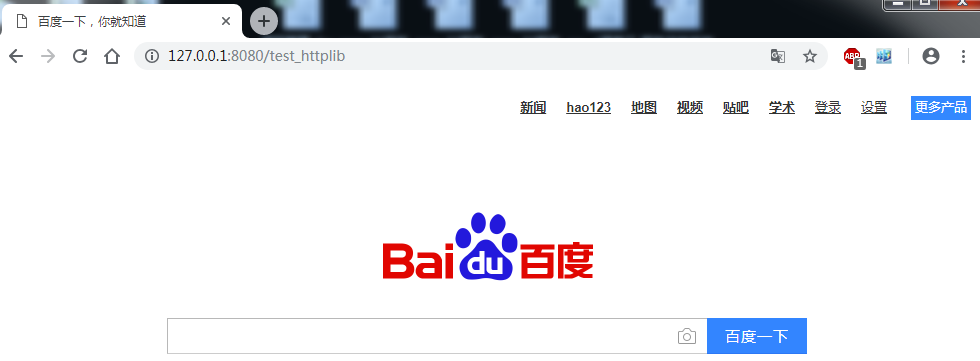一、httplib
1、配置文件解析
这是一个用来解析文件的库,它的设计思路来自于 database/sql,目前支持解析的文件格式有 ini、json、xml、yaml,可以通过如下方式进行安装:
go get github.com/astaxie/beego/config
如果你使用xml 或者 yaml 驱动就需要手工安装引入包
go get -u github.com/astaxie/beego/config/xml
2、始何使用
首先初始化一个解析器对象
iniconf, err := NewConfig("ini", "testini.conf")
if err != nil {
t.Fatal(err)
}
然后通过对象获取数据
iniconf.String("appname")
解析器对象支持的函数有如下:
- Set(key, val string) error
- String(key string) string
- Int(key string) (int, error)
- Int64(key string) (int64, error)
- Bool(key string) (bool, error)
- Float(key string) (float64, error)
- DIY(key string) (interface{}, error)
ini 配置文件支持 section 操作,key通过 section::key 的方式获取
例如下面这样的配置文件
[demo] key1 = "asta" key2 = "xie"
那么可以通过 iniconf.String("demo::key2") 获取值.
如何获取环境变量
config 模块支持环境变量配置,对应配置项 Key 格式为 ${环境变量名} ,则 Value = os.Getenv(‘环境变量名’)。
同时可配置默认值,当环境变量无此配置或者环境变量值为空时,则优先使用默认值。包含默认值的 Key 格式为 ${GOPATH||/home/workspace/go/} ,使用||分割环境变量和默认值。
注意 获取环境变量值仅仅是在配置文件解析时处理,而不会在调用函数获取配置项时实时处理。
示例:
controllers/testHttpLib.go
package controllers
import (
"github.com/astaxie/beego"
"github.com/astaxie/beego/httplib"
)
type TestHttpLibController struct {
beego.Controller
}
func (c *TestHttpLibController) Get() {
req := httplib.Get("http://www.baidu.com")
str, err := req.String()
if err != nil {
panic(err)
}
//获取网站源代码
//c.Ctx.WriteString("start")
//直接打开网站
c.Ctx.WriteString(str)
}
routers/router.go
package routers
import (
"web/controllers"
"github.com/astaxie/beego"
)
func init() {
beego.Router("/", &controllers.MainController{})
beego.Router("/test_httplib", &controllers.TestHttpLibController{}, "get:Get;post:Post")
}
执行结果: 直接打开网站

二、context
1、上下文模块
上下文模块主要是针对 HTTP 请求中,request 和 response 的进一步封装,他包括用户的输入和输出,用户的输入即为 request,context 模块中提供了 Input 对象进行解析,用户的输出即为 response,context 模块中提供了 Output 对象进行输出。
2、context对象
context 对象是对 Input 和 Output 的封装,里面封装了几个方法:
- Redirect
- Abort
- WriteString
- GetCookie
- SetCookie
context 对象是 Filter 函数的参数对象,这样你就可以通过 filter 来修改相应的数据,或者提前结束整个的执行过程。
Output 对象
Output 是针对 Response 的封装,里面提供了很多方便的方法:
-
Header
设置输出的 header 信息,例如
Header("Server","beego") -
Body
设置输出的内容信息,例如
Body([]byte("astaxie")) -
Cookie
设置输出的 cookie 信息,例如
Cookie("sessionID","beegoSessionID") -
Json
把 Data 格式化为 Json,然后调用 Body 输出数据
-
Jsonp
把 Data 格式化为 Jsonp,然后调用 Body 输出数据
-
Xml
把 Data 格式化为 Xml,然后调用 Body 输出数据
-
Download
把 file 路径传递进来,然后输出文件给用户
-
ContentType
设置输出的 ContentType
-
SetStatus
设置输出的 status
-
Session
设置在服务器端保存的值,例如
Session("username","astaxie"),这样用户就可以在下次使用的时候读取 -
IsCachable
根据 status 判断,是否为缓存类的状态
-
IsEmpty
根据 status 判断,是否为输出内容为空的状态
-
IsOk
根据 status 判断,是否为 200 的状态
-
IsSuccessful
根据 status 判断,是否为正常的状态
-
IsRedirect
根据 status 判断,是否为跳转类的状态
-
IsForbidden
根据 status 判断,是否为禁用类的状态
-
IsNotFound
根据 status 判断,是否为找不到资源类的状态
-
IsClientError
根据 status 判断,是否为请求客户端错误的状态
-
IsServerError
根据 status 判断,是否为服务器端错误的状态
获取IP地址和端口
示例:
controllers/testContext.go
package controllers
import (
"strconv"
"github.com/astaxie/beego"
)
type TestContextController struct {
beego.Controller
}
func (c *TestContextController) Get() {
c.Ctx.WriteString(c.Ctx.Input.IP() + ":" + strconv.Itoa(c.Ctx.Input.Port()))
}
routers/router.go
package routers
import (
"web/controllers"
"github.com/astaxie/beego"
)
func init() {
beego.Router("/", &controllers.MainController{})
beego.Router("/test_context", &controllers.TestContextController{}, "get:Get;post:Post")
}
执行结果:
http://127.0.0.1:8080/test_context 返回结果: 127.0.0.1:8080
Input 对象
Input 对象是针对 request 的封装,里面通过 reqeust 实现很多方便的方法,具体如下:
Protocol
获取用户请求的协议,例如 HTTP/1.0
Uri
用户请求的 RequestURI,例如 /hi?id=1001
Url
请求的 URL 地址,例如 /hi
Site
请求的站点地址,scheme+doamin 的组合,例如 http://beego.me
Scheme
请求的 scheme,例如 “http” 或者 “https”
Domain
请求的域名,例如 beego.me
Host
请求的域名,和 domain 一样
Method
请求的方法,标准的 HTTP 请求方法,例如 GET、POST 等
Is
判断是否是某一个方法,例如 Is("GET") 返回 true
IsAjax
判断是否是 AJAX 请求,如果是返回 true,不是返回 false
IsSecure
判断当前请求是否 HTTPS 请求,是返回 true,否返回 false
IsWebsocket
判断当前请求是否 Websocket 请求,如果是返回 true,否返回 false
IsUpload
判断当前请求是否有文件上传,有返回 true,否返回 false
IP
返回请求用户的 IP,如果用户通过代理,一层一层剥离获取真实的 IP
Proxy
返回用户代理请求的所有 IP
Refer
返回请求的 refer 信息
SubDomains
返回请求域名的根域名,例如请求是 blog.beego.me,那么调用该函数返回 beego.me
Port
返回请求的端口,例如返回 8080
UserAgent
返回请求的 UserAgent,例如 Mozilla/5.0 (Macintosh; Intel Mac OS X 10_9_0) AppleWebKit/537.36 (KHTML, like Gecko) Chrome/31.0.1650.57 Safari/537.36
Param
在路由设置的时候可以设置参数,这个是用来获取那些参数的,例如 Param(":id"),返回12
Query
该函数返回 Get 请求和 Post 请求中的所有数据,和 PHP 中 $_REQUEST 类似
Header
返回相应的 header 信息,例如 Header("Accept-Language"),就返回请求头中对应的信息 zh-CN,zh;q=0.8,en;q=0.6
Cookie
返回请求中的 cookie 数据,例如 Cookie("username"),就可以获取请求头中携带的 cookie 信息中 username 对应的值
Session
session 是用户可以初始化的信息,默认采用了 beego 的 session 模块中的 Session 对象,用来获取存储在服务器端中的数据。
Body
返回请求 Body 中数据,例如 API 应用中,很多用户直接发送 json 数据包,那么通过 Query 这种函数无法获取数据,就必须通过该函数获取数据。该函数已经 beego 1.5 版本之后删除,目前可以通过 RequestBody 获取数据。
GetData
用来获取 Input 中 Data 中的数据
SetData
用来设置 Input 中 Data 的值,上面 GetData 和这个函数都是用来方便用户在 Filter 中传递数据到 Controller 中来执行
Query方法
示例:
controllers/testContext.go
package controllers
import (
"strconv"
"github.com/astaxie/beego"
)
type TestContextController struct {
beego.Controller
}
func (c *TestContextController) Get() {
c.Ctx.WriteString(c.Ctx.Input.IP() + ":" + strconv.Itoa(c.Ctx.Input.Port()))
//Query方法
c.Ctx.WriteString(c.Ctx.Input.Query("name")) //等价于php中的 $_REQUEST["name"]
}
routers/router.go
package routers
import (
"web/controllers"
"github.com/astaxie/beego"
)
func init() {
beego.Router("/", &controllers.MainController{})
beego.Router("/test_context", &controllers.TestContextController{}, "get:Get;post:Post")
}
执行结果:
http://127.0.0.1:8080/test_context?name=nulige 返回结果:
127.0.0.1:8080nulige
另外一种方法:
示例:
controllers/testContext.go
package controllers
import (
"strconv"
"github.com/astaxie/beego"
)
type TestContextController struct {
beego.Controller
}
func (c *TestContextController) Get() {
c.Ctx.WriteString(c.Ctx.Input.IP() + ":" + strconv.Itoa(c.Ctx.Input.Port()))
//Query方法
c.Ctx.WriteString(c.Ctx.Input.Query("name")) //等价于php中的 $_REQUEST["name"]
m := make(map[string]float64)
m["zhangsan"] = 98.7
c.Ctx.Output.JSON(m, false, false)
}
routers/router.go
package routers
import (
"web/controllers"
"github.com/astaxie/beego"
)
func init() {
beego.Router("/", &controllers.MainController{})
beego.Router("/test_context", &controllers.TestContextController{}, "get:Get;post:Post")
}
执行结果:
http://127.0.0.1:8080/test_context 返回结果:
127.0.0.1:8080{"zhangsan":98.7}